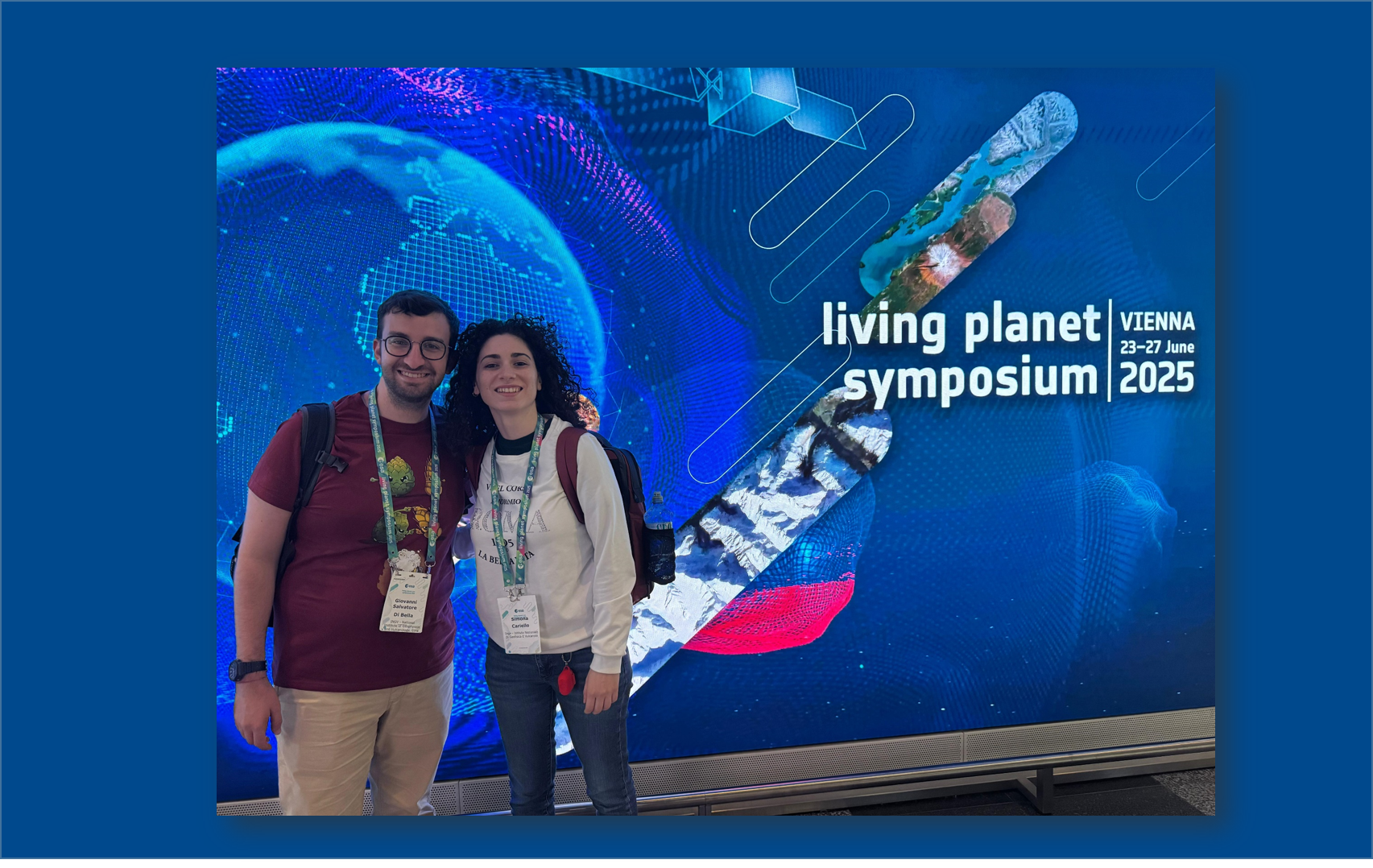ESA’s week-long Living Planet Symposium kicked off today in Vienna, Austria, bringing together scientists and researchers from around the globe.
After three years of waiting, the Living Planet Symposium has finally arrived, and Technolab is here. It’s an event full of inspiration and new ideas to take home and apply to our work. It’s also a precious opportunity to meet many friends and fellow researchers from all over the world and to build new connections. Every session was rich in content, and the exchange of knowledge was truly fruitful. We are also celebrating ten years since the launch of Sentinel-2 and discovering new sensors already in orbit as well as those that will be launched in the future, tools that allow us to plan our activities more effectively and stay at the forefront of satellite technology.
Simona Cariello and Giovanni Salvatore Di Bella showcased some of their ongoing work in the poster session. In particular, Simona presented her work titled “AI and Multisensor Data Fusion for Accurate Lava Flow Segmentation”, a study focused on integrating data from different sensors, especially Sentinel-2 and Sentinel-1, to achieve more precise lava flow segmentation. Giovanni, on the other hand, presented his work titled “Super Resolution for Volcano Monitoring: Enhancing Satellite Image Precision,” where he applies super resolution techniques to improve the resolution of SEVIRI images, aiming for greater accuracy in detecting thermal anomalies related to volcanic activity.
Finally, the beautiful city of Vienna provided a stunning backdrop for these days of the conference, with its architectural wonders, elegant atmosphere, and countless opportunities for cultural and culinary discoveries, making the experience even more special and memorable.
We already can’t wait for the next three years to pass so we can attend the next LPS. If you’d like to know more details, follow our activities on our website and channels, where you’ll find updates on our projects, ongoing research, and the latest news from the world of Earth observation.
.png)

